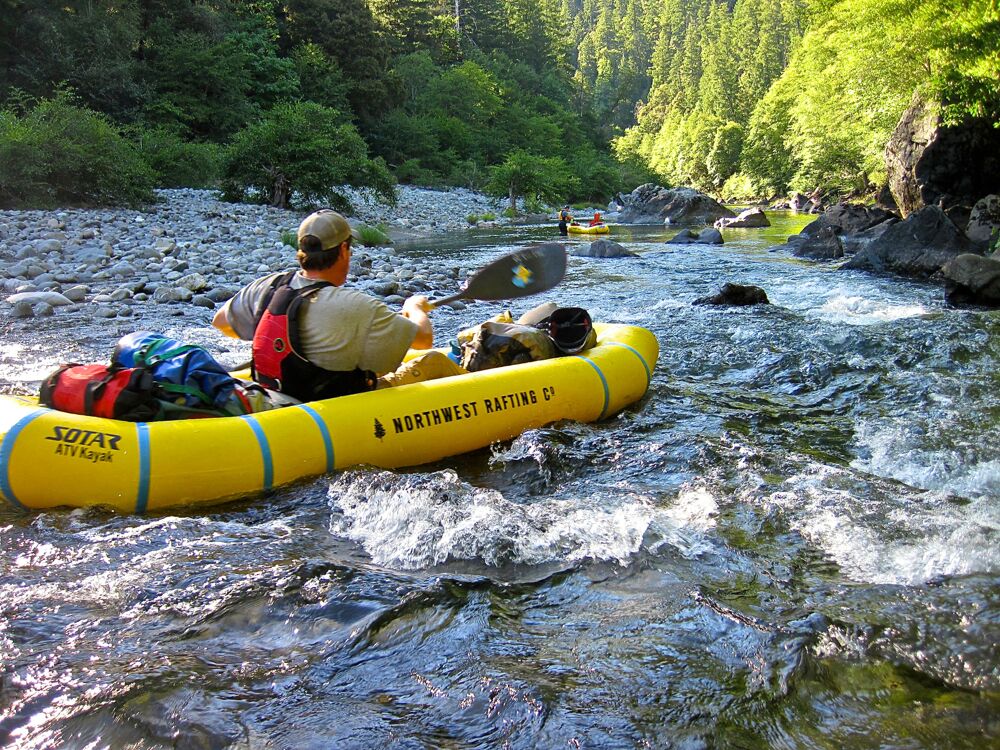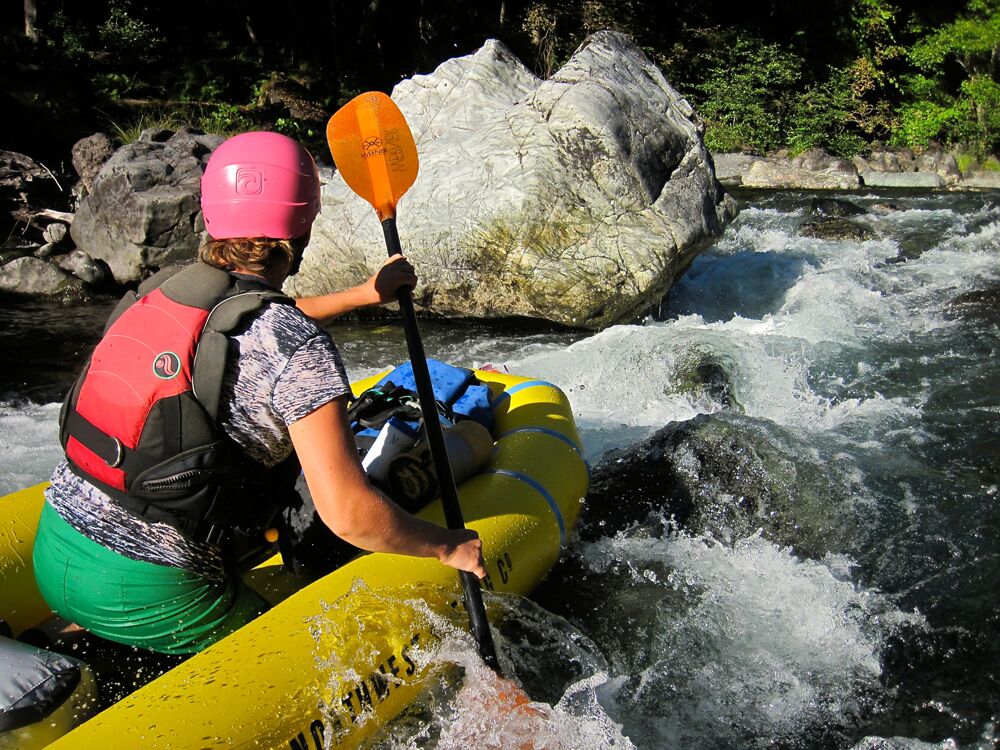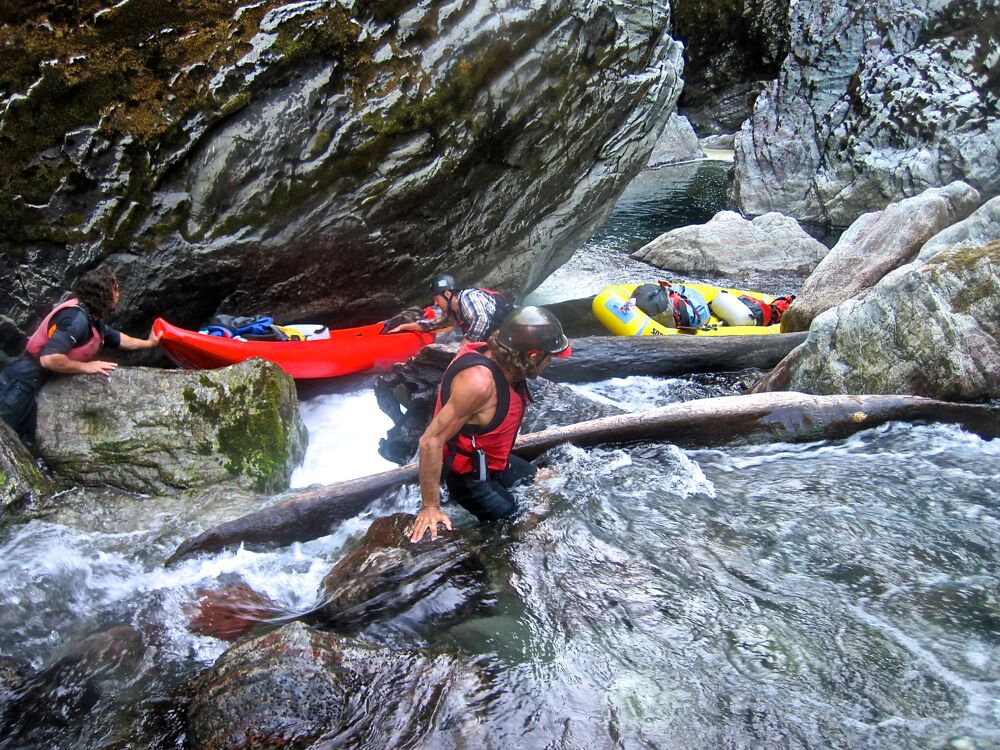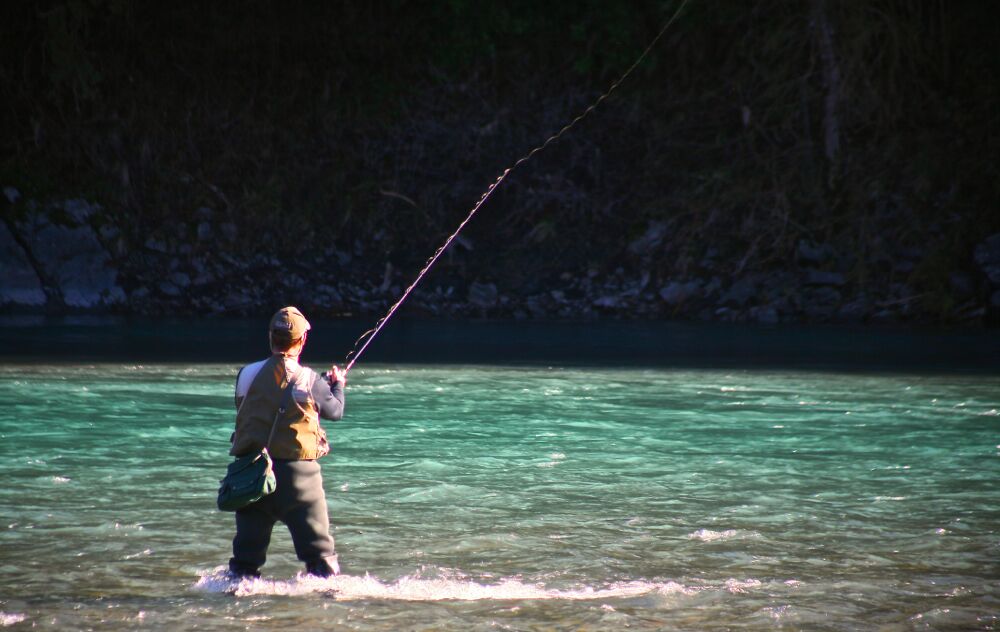Author and photographer Tim Palmer, author of Rivers of Oregon, joins us again today to share his experience travelling down the Chetco River, which provides a lively contrast to his journey on the gentle waters of the Willamette. The Chetco runs an expanse of approximately 57 miles. However, much of the river runs wild. In today's piece, Tim gives readers the chance to encounter the sights found in these 57 miles, allowing us to glimpse into the often-unseen wild of the Chetco.
----------

At the beginning of my book, Rivers of Oregon, I reflected on a journey down the Willamette River, gently winding through the heart of Oregon's most populated valley. Plentiful flows whisked me past shores constrained by farmland but still green with cottonwoods. The riparian artistry that I found will enchant anyone who drifts with the current and notices what's there.
 For a counterpoint to the Willamette's welcoming ease of travel, I journeyed with my wife, Ann, and a small group of friends to one of Oregon's least tamed and most remote rivers, the Chetco.
For a counterpoint to the Willamette's welcoming ease of travel, I journeyed with my wife, Ann, and a small group of friends to one of Oregon's least tamed and most remote rivers, the Chetco.
While upper reaches of that coastal stream are all wilderness, and visiting requires a long hike, an isolated mid-section can be reached by a rough road leading to a remote riverfront. There we unpacked our inflatable kayaks, strapped a waterproof bag of supplies onto each, and began to paddle-- not downriver-- but up. We wanted to see the nature of an extraordinary canyon, and our boats offered the only way to go.
We paddled through pools that were crystalline and so deep we could not dive to the bottom. Then we dragged our gear over boulders and gravel bars up to the next pool, again and again. We passed the mouths of tributaries feeding pristine waters into the river. We encountered cliffs and tangles of fallen cedars as we pressed onward for several miles to Boulder Creek and the Kalmiopsis Wilderness-- among the first Wilderness Areas designated in America and the third largest in Oregon. We camped on the gentle slope of a gravel bar where evergreens shaded our tents and where the Chetco shimmered past, its music entertaining us from rapids both above and below. While the Willamette had offered me a comforting tour through Oregon's heartland with farms and towns along the way, the Chetco was as wild as it gets.
The next day we began our descent, passing our put-in point and continuing downstream for another two days through lower canyons. We dropped over dozens of rapids that would have been threatening in the flush of springtime, but on low summertime runoff we slipped through, or bounced off rocks in our forgiving air-filled craft, or clamored over slippery rocks, lugging our gear and pairing-up to push and pull our boats.

Two impressive bottlenecks required portaging over boulders the size of cars and busses. The first was an extravaganza of maroon, white, and gray-striped rocks in a rapid called Radiolaria for the microscopic creatures that had fossilized to create those rocks undersea prior to the Coast Range uplift. Then Conehead's radical drop-- shaded by two pointed monoliths and clogged with logs-- demanded that we line our craft through narrow chutes and a slot barely boat-wide. 
Downstream from that last canyon, a more casual Chetco is easily reached along a forest road. Its refreshing riffles and deep green pools-- alive with spawning salmon in winter and swimming children in summer-- are no less beautiful than the wilderness above. It's a riverfront, like many in Oregon, where you can see a free-flowing waterway connecting mountains to sea, forests to fish, and people to the natural world around them.
For other wild scenes and remarkable river adventures in Oregon I traveled to the Salmonberry, North Umpqua, and Collawash; the Metolius, Imnaha, and Wenaha. Whether we go exploring at these or the Willamette-- or any of the hundred rivers and thousands of streams in between-- Oregon is a wonderland of waterways. The rivers flow all around us.

